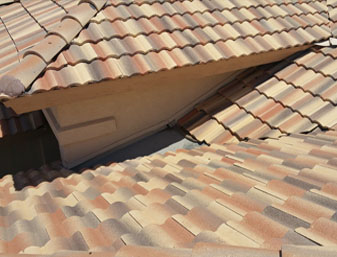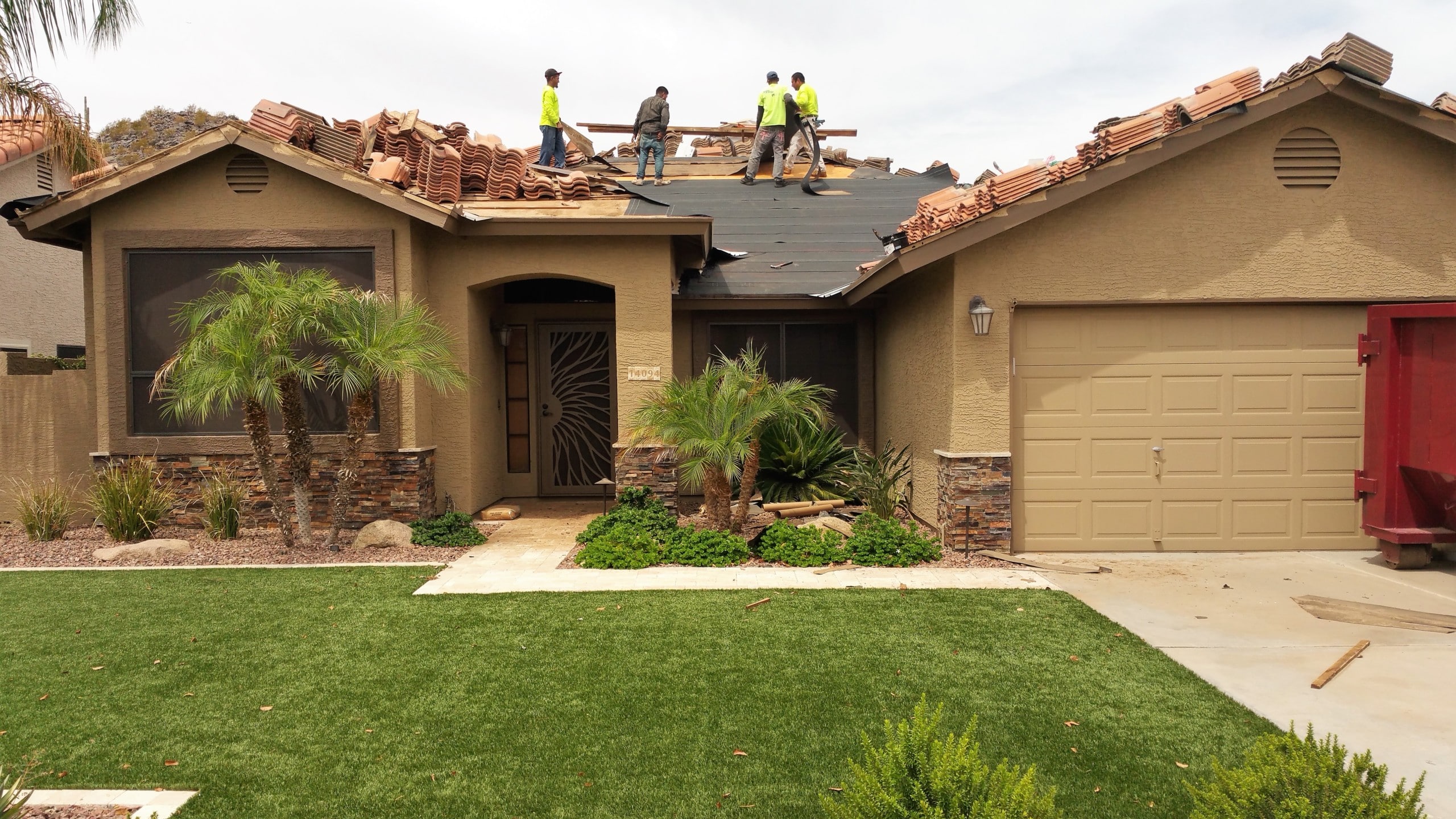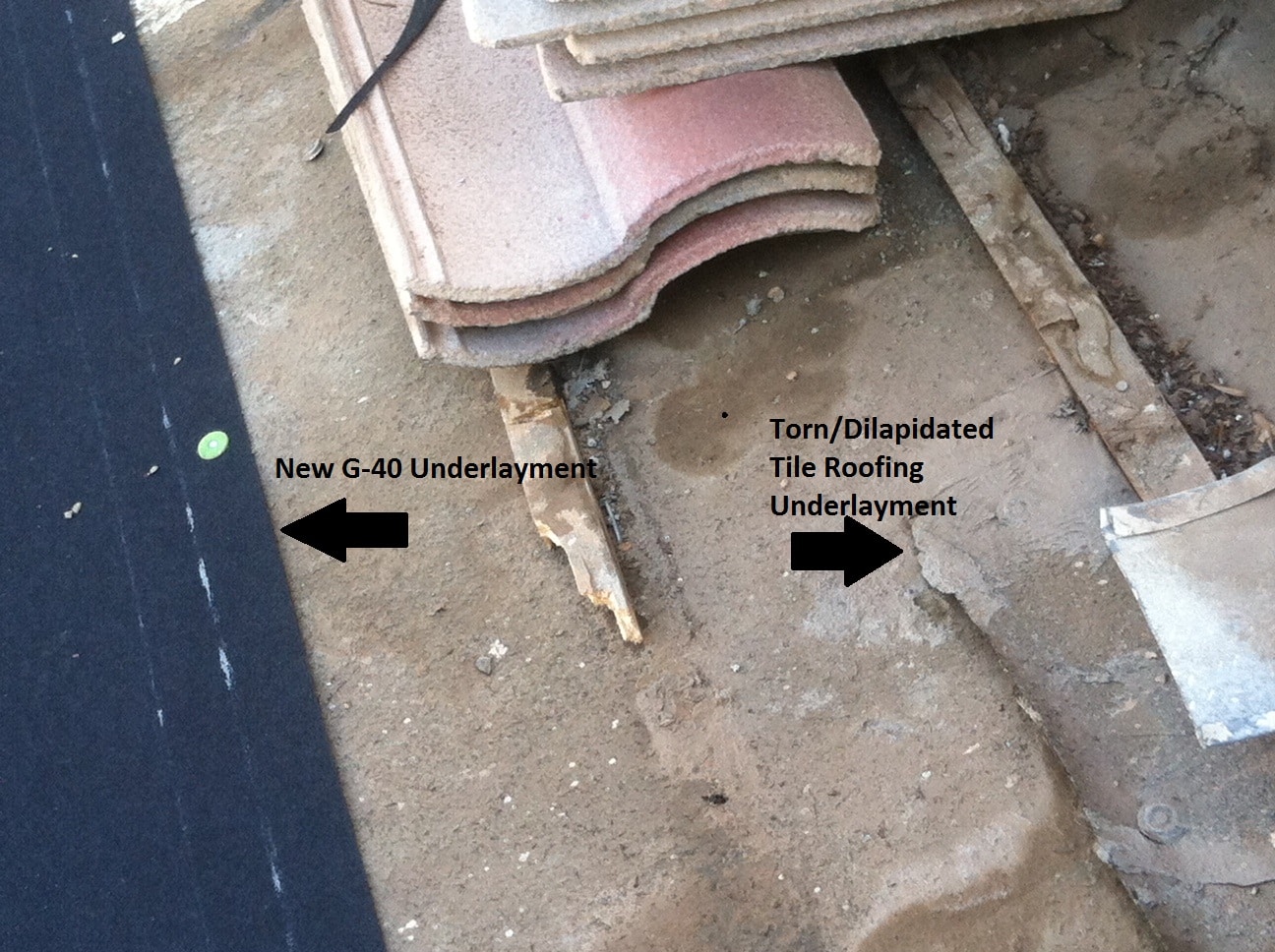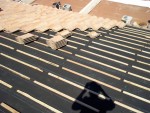
Concrete tile roof in Phoenix, AZ
Tile roofs are very common in Arizona. The 3 most common types of tile residential roofing in Arizona are:
clay, sandcast and concrete.
Each material requires a different roof installation technique. Today, we’ll talk about concrete tile roofs, since this is the most common type of tile in the southwest.
Some builders claim tile roofs have a lifetime warranty. A lot of people don’t realize the tile has a lifetime warranty but NOT the underlayment. What many people don’t realize is the tiles on your roof are not what not really makes your roof waterproof! The tile on a roof is mostly cosmetic and acts as a sunscreen for the underlayment. The underlayment underneath your tiles is the main waterproofing element. If you’re considering tile roofing for your next roof replacement project, there’s a few things you should know first.


Most tile roofs that are 10 years old or older have a 30# felt as an underlayment. When 30# felt is exposed to the elements, the felt prematurely deteriorates and this is when your roof begins to leak.
Now I’ll show you some details that we’ve found are the cause of premature failure.
In the early days, 30 pound felt was the most common underlayment used under tile roofs. Today, most contractors use a minimum 40# felt, we use a G-40 modified underlayment. This underlayment is far superior to a 30 pound felt and is warranted by the manufacturer for up to 20 years, if installed by a Tile Roofing Institute certified contractor.
The reason why 30# underlayment is inferior to G40 is because 30# is made of only organic materials. When 30# felt is exposed to contaminates such as dirt and debris, the organic felt breaks down quickly. A biological attack occurs. It becomes brittle, torn and dilapidated, and that’s when a roof starts leaking.

In contrast, G-40 underlayment is made of a combination of rubber and asphalt. Because the modified underlayment is made of stronger, non-organic materials, its lasts longer, and holds up better if it’s allowed to be exposed to the elements. G-40 is a self healing material- a little like memory foam. When a nail is driven through this material, the felt quickly closes around the nail, creating a water tight seal and remaining that way much longer.

We highly recommend considering an upgrade to 2 layers of G-40 underlayment. This added layer greatly increases the lifespan of a roof, and allows Canyon State Roofing to offer up to a 15 year workmanship warranty, and a 20 year manufacturer’s warranty.
The reason some tile roof underlayment needs to be replaced at 10-15 years and some last more than 20 years is often times because of:
- Improper installation
- Improper tile exposure
- Low grade underlayment
- Lack of hip and ridge closure
- Undersized Channel Metals
- Lack of maintenance over the years.

If your tile roof is in the 15-20 year old range or older, or is showing signs of leaking, Call us. Are you wondering how much does a roof repairs Dublin cost? Here are the details that we, or any experienced licensed contractor will address:
Upon completion, the tile spacing will be no more than 13.5”. (most concrete tile) This often means that more tile will need to be purchased for the project.
New wood or plastic batten strips. These sticks are nailed through the underlayment to hold the tile in place. They should be placed properly to minimize the inevitable damming of dirt and debris under the tile. Elevated battens are available, which allow water to flow underneath the battens.
– Installation of underlayment – nails will be used, not staples. A minimum of 6” horizontal and 6” end laps are important. Two plies of G-40 makes for a 18” overlap!
– New channel metal may be proposed. This allows for more water to be carried within the proper channels.
– Proper valley installation – Valley metal should be placed under the felt not on top. 3 rib valleys replace most single rib valleys and allow for more positive water flow and less clogging, this is similar with the composite boards decking systems that we use in many of our projects.
– Secured tiles – 3 courses of tiles need to be secured with nails at the perimeter of the roof at all eaves, ridges and gables.
– Plastic hip and ridge closure is required to be installed at all hips and ridges. This detail bridges the gap between the field tile and the hips and ridges. This detail will allow little or no water dirt and debris to slip between the underlayment and the tile.
– Underlayment is a minimum of 40# felt.
– The eave detail should be discussed and proper flashing installed if previous flashing detail has failed. There are a number of options to consider, some cosmetic and some functional.

Jim McLain, Owner
The mission of Canyon State Roofing is to educate our customers so they can make an informed decision on their roofs. We have had the same tile crews working with us for several years, and all of them have gone through formal training. You can rest assured your roofing project is in great hands. Call Canyon State Roofing today at 602-400-1635. Thank you for reading our article!

























